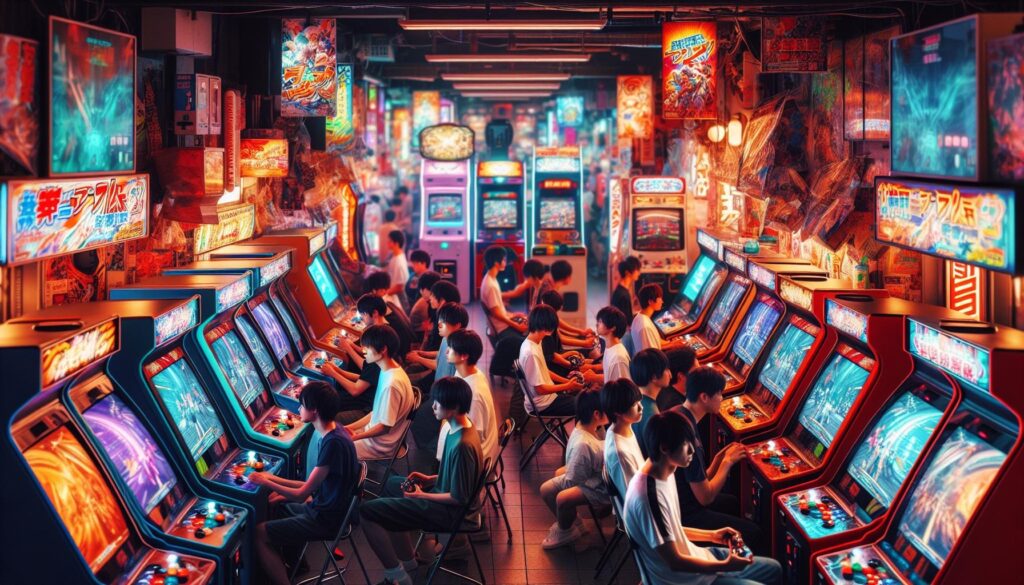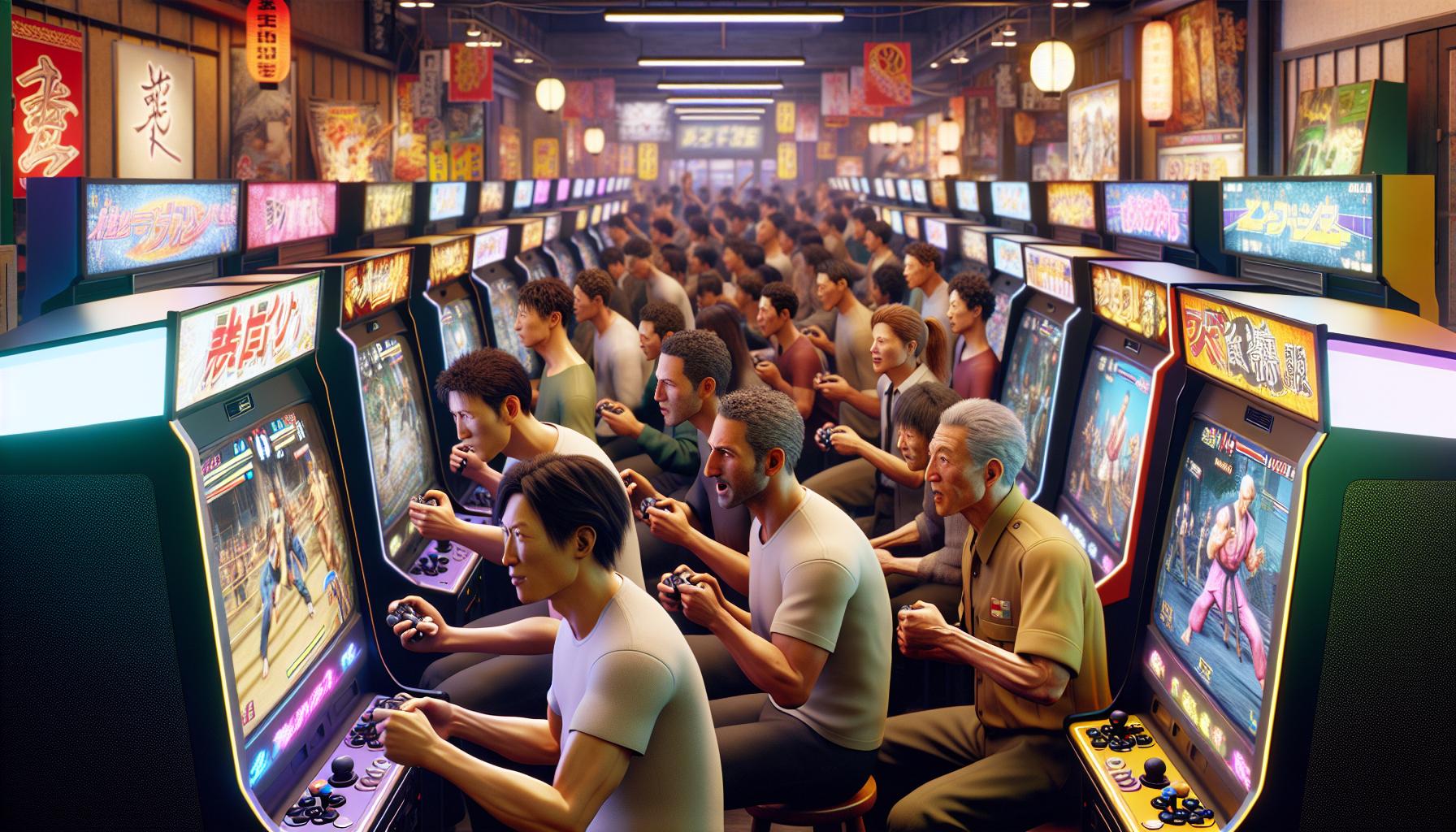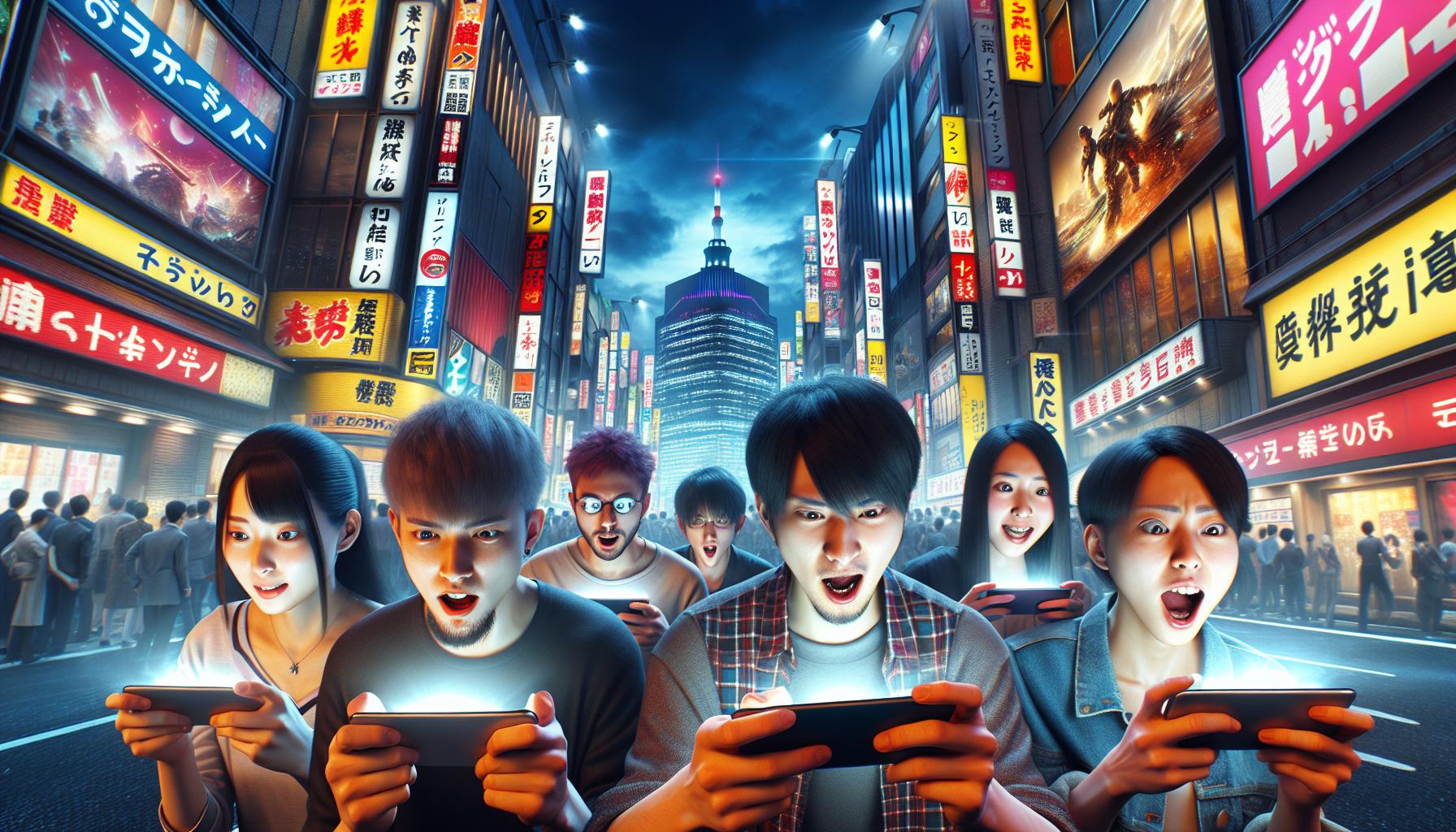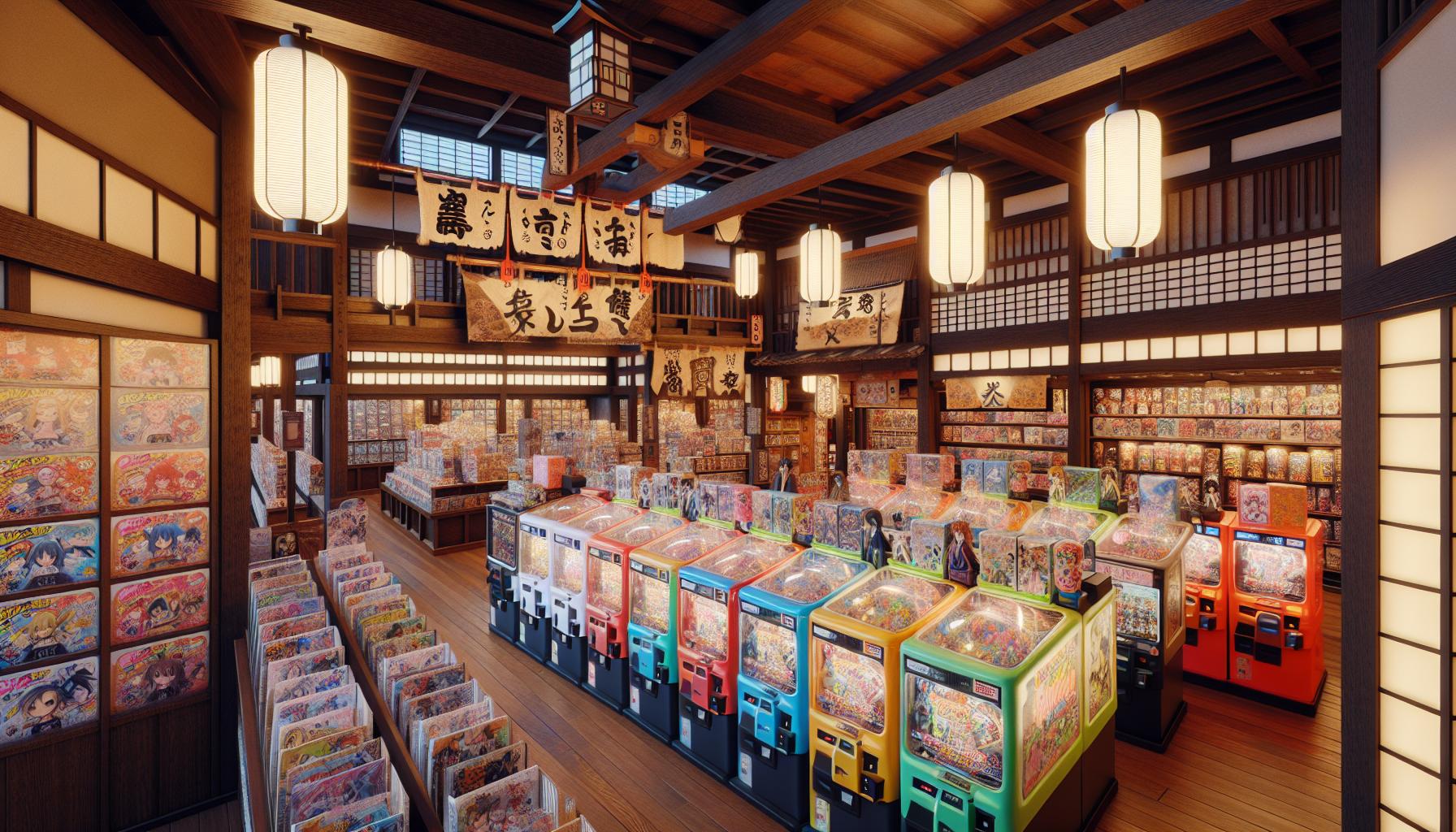Japan stands as the undisputed gaming mecca where pixels meet passion and controllers become extensions of daily life. From bustling arcades in Akihabara to competitive eSports arenas in Tokyo this fascinating culture has transformed gaming into an art form that transcends generations.
The Land of the Rising Sun didn’t just embrace gaming – it revolutionized it. With industry giants like Nintendo and Sony leading the charge Japan’s influence on global gaming culture remains unmatched. Whether it’s salary workers unwinding with pachinko machines or teenagers mastering the latest rhythm games gaming has become deeply woven into the fabric of Japanese society. It’s not just entertainment – it’s a lifestyle that’s shaped everything from social interactions to technological innovation making Japan the ultimate playground for gaming enthusiasts worldwide.
Japan Gaming Culture
Japan’s gaming evolution transformed from simple electronic entertainment into a cultural powerhouse spanning five decades. The country’s technological innovation shaped modern gaming through groundbreaking hardware development electronic entertainment systems.
The Birth of Video Game Giants
Nintendo emerged in 1889 as a playing card manufacturer before revolutionizing the gaming industry in 1983 with the Family Computer (Famicom). SEGA established its presence in 1960 as a slot machine company then expanded into arcade games during the 1970s. Sony entered the gaming market in 1994 with the PlayStation, selling 102.4 million units worldwide.
| Company | Founded | First Gaming Product | Year |
|---|---|---|---|
| Nintendo | 1889 | Famicom | 1983 |
| SEGA | 1960 | Periscope | 1966 |
| Sony | 1946 | PlayStation | 1994 |
- Game & Watch featuring LCD screen technology
- Game Boy introducing portable gaming cartridges
- PlayStation Portable combining multimedia capabilities
- Nintendo DS showcasing dual-screen innovation
Gaming Centers and Arcade Culture
Japanese gaming centers, known as game centers or arcades, remain cultural hubs that shape social interactions and gaming trends. These establishments occupy prominent locations in urban areas, attracting millions of visitors annually.
The Social Aspect of Japanese Arcades
Gaming centers foster unique social environments where players connect through shared gaming experiences. Friends gather at designated meeting spots near popular machines to compete or collaborate on multiplayer titles. Regular patrons develop relationships with arcade staff who provide gaming tips and maintain community standards. Tournament events bring together players of varying skill levels, creating opportunities for mentorship and friendly competition. Local arcades serve as training grounds for professional gamers who practice on the latest equipment and network with fellow enthusiasts.
Popular Arcade Game Genres
Fighting games dominate the Japanese arcade scene, featuring titles like Street Fighter and Tekken with dedicated player bases. Rhythm games including Taiko no Tatsujin and Dance Dance Revolution attract players seeking musical challenges. Racing simulators offer authentic experiences with full-scale cockpits and motion feedback systems. UFO catchers and prize games occupy significant floor space, featuring exclusive merchandise and collectibles. Shooting games incorporate innovative control schemes with light guns or mounted weapons for immersive gameplay. Card-based arcade games integrate physical collectibles with digital gameplay, creating unique experiences unavailable on home consoles.
Mobile Gaming Revolution
Japan’s mobile gaming market generates over $18.2 billion in annual revenue, representing 22% of the global mobile gaming industry. The shift from traditional consoles to smartphones has transformed how Japanese gamers interact with digital entertainment.
The Rise of Gacha Games
Gacha games dominate Japan’s mobile gaming landscape, generating $12.7 billion in revenue during 2022. Popular titles like Monster Strike, Fate/Grand Order and Genshin Impact utilize a digital version of gashapon machines, where players spend virtual currency to obtain random characters or items. Leading developers such as miHoYo, DeNA and GungHo Online Entertainment have refined this monetization model through limited-time events, character collaborations and seasonal promotions. The average Japanese gacha game player spends $371 annually on in-game purchases, reflecting the genre’s cultural impact and economic significance.
Social Gaming Networks
LINE, Japan’s largest social gaming platform, connects over 94 million monthly active users through integrated mobile games. Popular gaming networks like GREE and Mobage enable players to compete, collaborate and communicate through built-in messaging systems. These platforms feature achievement systems, friend rankings and multiplayer tournaments that drive engagement. Japanese developers optimize games for commuter gameplay sessions, with 73% of users playing during train rides. Cross-promotional events between games create interconnected communities, fostering player retention across multiple titles.
Cultural Impact on Game Design
Japanese cultural values shape distinctive game design principles that influence global gaming trends. The integration of traditional aesthetics with modern gameplay mechanics creates unique experiences that resonate worldwide.
Unique Japanese Gaming Elements
Japanese games incorporate cultural elements like collectible mechanics inspired by gachapon vending machines. Role-playing games feature turn-based combat systems derived from traditional strategic board games like shogi. Dating simulation games reflect social dynamics specific to Japanese youth culture through character interactions. Monster-collecting games draw inspiration from Japanese folklore creatures such as yokai. Rhythm games integrate J-pop music culture with precise timing mechanics. Character progression systems mirror the senpai-kohai relationship structure found in Japanese society.
Art Styles and Storytelling Approaches
Japanese games feature distinct visual styles ranging from kawaii aesthetics to detailed anime-inspired character designs. Visual novels emphasize narrative depth through branching storylines with multiple endings. Character designs incorporate symbolic elements from Japanese mythology such as kitsune foxes or dragon motifs. Environmental art draws from traditional Japanese architecture featuring torii gates temples pagodas. Storytelling focuses on themes of personal growth friendship emotional bonds common in Japanese media. Games often blend science fiction elements with traditional Japanese spiritual concepts creating unique narrative frameworks.
Esports and Competitive Gaming
Japan’s esports industry surpassed $60 million in revenue in 2022, marking significant growth in professional gaming. The competitive gaming scene combines traditional arcade culture with modern esports infrastructure, creating unique opportunities for professional players.
Professional Gaming in Japan
Japanese esports organizations field competitive teams across multiple game titles, including Street Fighter 6, Valorant, League of Legends. Professional players earn an average salary of ¥300,000 ($2,000) per month, with additional income from tournament winnings and sponsorships. The Japan Esports Union (JeSU) licenses professional players and organizes major tournaments, establishing standardized regulations for competitive play. Top organizations like DetonatioN Gaming, Crazy Raccoon, and ZETA DIVISION maintain training facilities in Tokyo, providing structured environments for player development. Major corporations including SoftBank, Konami, and SEGA actively invest in esports teams, contributing to the ecosystem’s growth.
Tournament Culture
Japanese tournaments integrate unique elements from arcade gaming traditions into modern esports events. EVO Japan attracts 15,000+ attendees annually, featuring fighting game competitions with prize pools exceeding $100,000. Local gaming centers host weekly tournaments across 2,500 locations nationwide, creating grassroots competitive communities. Tournament organizers emphasize spectator engagement through interactive fan zones, cosplay competitions, and player meet-and-greet sessions. Regional circuits in cities like Tokyo, Osaka, and Fukuoka provide competitive progression paths for amateur players. Major venues including Makuhari Messe and Tokyo Big Sight host premier tournaments, accommodating audiences of 5,000+ spectators.
Gaming Communities and Fan Culture
Japanese gaming communities form intricate social networks that extend beyond digital interactions into physical spaces. These communities create lasting connections through shared gaming experiences while preserving unique cultural traditions.
Akihabara Gaming Scene
Akihabara stands as Tokyo’s premier gaming district, featuring over 100 dedicated gaming shops across a 1.2-square-kilometer area. Specialty stores like Super Potato showcase rare retro games dating back to the 1980s, while major retailers like Yodobashi Camera occupy multi-floor complexes dedicated to current releases. Gaming cafes dot the landscape, offering hourly rentals of consoles ranging from classic Nintendo systems to modern PlayStation setups. Merchandise shops display extensive collections of gaming memorabilia, with popular franchises like Final Fantasy generating ¥5 billion in annual sales through collectibles alone.
Gaming Conventions and Events
Tokyo Game Show leads Japan’s gaming event calendar, attracting 250,000 visitors annually to the Makuhari Messe convention center. BitSummit showcases independent game developers, hosting 200 exhibitors each year in Kyoto. Weekly tournaments at locations like Red Bull Gaming Sphere Tokyo draw competitive players across multiple genres. Regular gaming meetups organized through platforms like Discord connect 50,000 active members in Tokyo alone. Local game centers host monthly competitions for popular titles such as Street Fighter 6 with prize pools reaching ¥500,000.
The Future of Japanese Gaming
Japanese gaming stands at the forefront of technological innovation and cultural influence, shaping the future of interactive entertainment. The industry continues to evolve through groundbreaking technologies and expanding global reach.
Emerging Technologies
Virtual reality development in Japan accelerates with companies like Sony advancing their PlayStation VR2 platform, featuring 4K HDR displays and haptic feedback technology. Japanese developers lead innovations in cloud gaming services, with Square Enix launching cloud-native games that stream directly to mobile devices. Artificial intelligence integration enhances NPC behaviors in Japanese games, creating more dynamic gaming experiences through machine learning algorithms. Motion control technologies advance through partnerships between Nintendo and tech startups, introducing precise gesture recognition systems. The integration of augmented reality expands through location-based games that transform cityscapes into interactive playgrounds, attracting 5 million active users in Tokyo alone.
Global Influence
Japanese gaming companies expand their international presence through strategic partnerships with Western developers, resulting in collaborative projects that blend Eastern and Western gaming elements. Major franchises like Final Fantasy generate $2.3 billion in global revenue through cross-cultural marketing strategies. Japanese mobile gaming frameworks inspire international developers, with gacha mechanics appearing in 40% of top-grossing mobile games worldwide. Studios like FromSoftware influence global game design through their distinctive approach to difficulty and storytelling, demonstrated by Elden Ring’s 20 million unit sales. Japanese esports organizations establish training facilities in North America and Europe, creating international competitive gaming networks.




